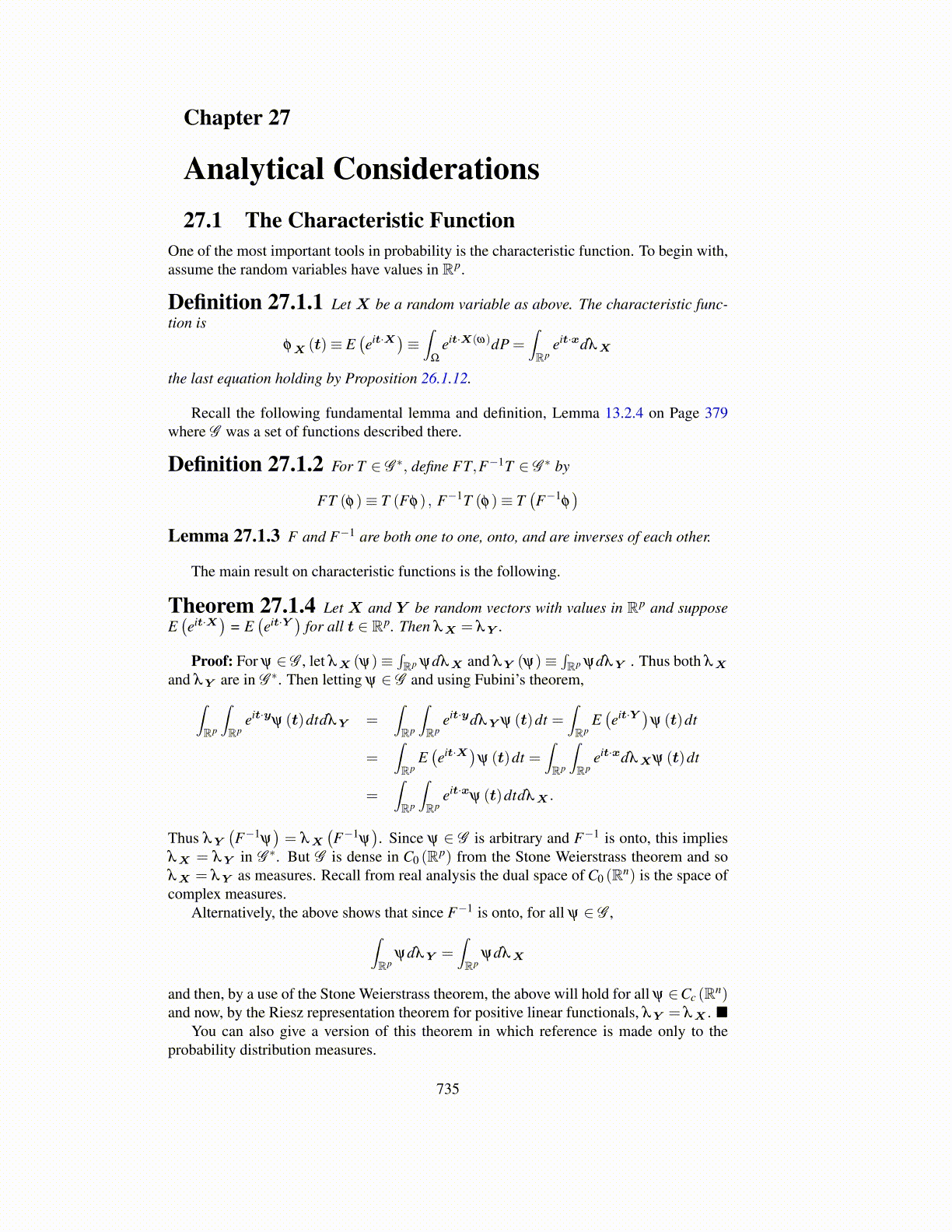
Chapter 27
Analytical Considerations27.1 The Characteristic Function
One of the most important tools in probability is the characteristic function. To begin with,assume the random variables have values in Rp.
Definition 27.1.1 Let X be a random variable as above. The characteristic func-tion is
φX (t)≡ E(eit·X)≡ ∫
Ω
eit·X(ω)dP =∫Rp
eit·xdλX
the last equation holding by Proposition 26.1.12.
Recall the following fundamental lemma and definition, Lemma 13.2.4 on Page 379where G was a set of functions described there.
Definition 27.1.2 For T ∈ G ∗, define FT,F−1T ∈ G ∗ by
FT (φ)≡ T (Fφ) , F−1T (φ)≡ T(F−1
φ)
Lemma 27.1.3 F and F−1 are both one to one, onto, and are inverses of each other.
The main result on characteristic functions is the following.
Theorem 27.1.4 Let X and Y be random vectors with values in Rp and supposeE(eit·X) = E
(eit·Y ) for all t ∈ Rp. Then λX = λY .
Proof: For ψ ∈ G , let λX (ψ)≡∫Rp ψdλX and λY (ψ)≡
∫Rp ψdλY . Thus both λX
and λY are in G ∗. Then letting ψ ∈ G and using Fubini’s theorem,∫Rp
∫Rp
eit·yψ (t)dtdλY =
∫Rp
∫Rp
eit·ydλY ψ (t)dt =∫Rp
E(eit·Y )
ψ (t)dt
=∫Rp
E(eit·X)
ψ (t)dt =∫Rp
∫Rp
eit·xdλXψ (t)dt
=∫Rp
∫Rp
eit·xψ (t)dtdλX .
Thus λY
(F−1ψ
)= λX
(F−1ψ
). Since ψ ∈ G is arbitrary and F−1 is onto, this implies
λX = λY in G ∗. But G is dense in C0 (Rp) from the Stone Weierstrass theorem and soλX = λY as measures. Recall from real analysis the dual space of C0 (Rn) is the space ofcomplex measures.
Alternatively, the above shows that since F−1 is onto, for all ψ ∈ G ,∫Rp
ψdλY =∫Rp
ψdλX
and then, by a use of the Stone Weierstrass theorem, the above will hold for all ψ ∈Cc (Rn)and now, by the Riesz representation theorem for positive linear functionals, λY = λX . ■
You can also give a version of this theorem in which reference is made only to theprobability distribution measures.
735